Hiroshi Sugimoto: Time Machine, Hayward Gallery review - a Japanese photographer uses droll humour to ask big questions | reviews, news & interviews
Hiroshi Sugimoto: Time Machine, Hayward Gallery review - a Japanese photographer uses droll humour to ask big questions
Hiroshi Sugimoto: Time Machine, Hayward Gallery review - a Japanese photographer uses droll humour to ask big questions
Bringing the dead to life and looking at the world before and after humans
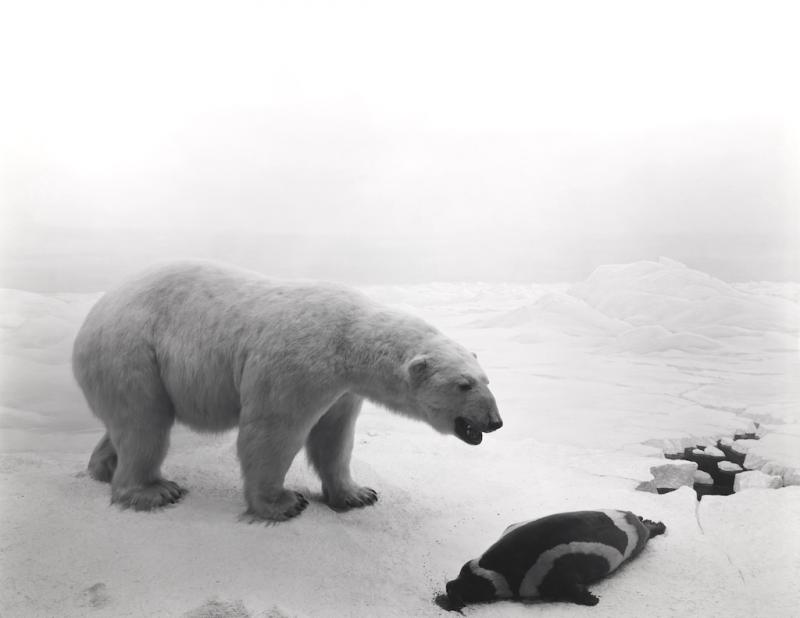
A polar bear stands guard over the seal pup it has just killed (main picture). How could photographer, Hiroshi Sugimoto have got so close to a wild animal at such a dangerous moment? Even if he had a powerful telephoto lens, he’d be risking life and limb. And what a perfect shot! Every hair on the bear’s body is crystal clear; in fact, it looks as if her fur has just been washed and brushed.
Once you start peering more closely, other anomalies begin to emerge. The sea ice looks suspiciously like expanded polystyrene dusted with flour rather than snow, and the distant ice hills are clearly painted onto a backdrop. This is no wild life photograph, but a fabricated scene; and when he took the picture, Sugimoto was not standing on an ice sheet, but a wooden floor.
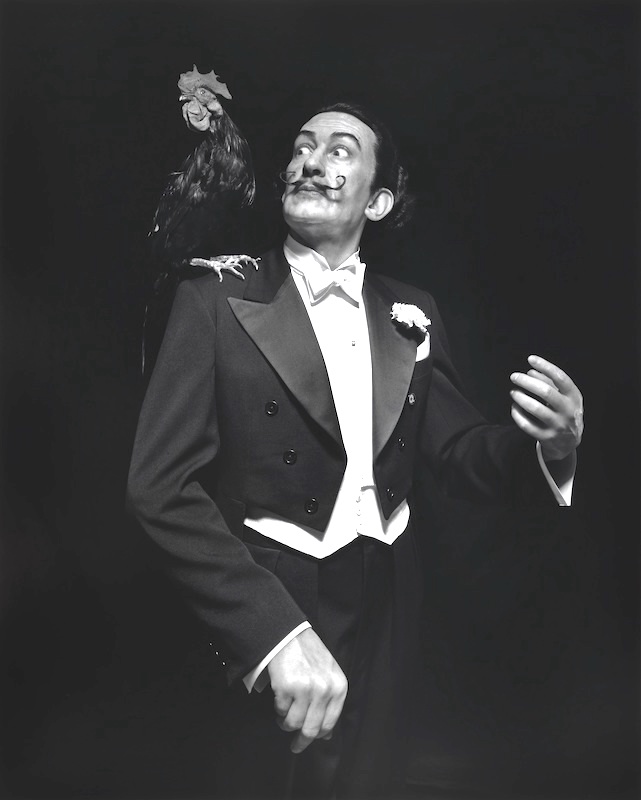 I don’t know if they are still on display in New York’s Natural History Museum, but I remember, on a visit to the Big Apple, being fascinated by the very dioramas that Sugimoto encountered when he moved to the city in 1974. Stuffed wolves, hyenas, vultures, monkeys and deer were among the animals posed in life-like positions surrounded by artificial grass, rocks and trees in front of painted backdrops that would fool nobody. Collectively, the experience felt apocalyptic – as if these dusty relics were all that was left of the wild life that once roamed the earth. Back then the idea wasn’t on anyone’s radar; now, though, it has become a hideous possibility.
I don’t know if they are still on display in New York’s Natural History Museum, but I remember, on a visit to the Big Apple, being fascinated by the very dioramas that Sugimoto encountered when he moved to the city in 1974. Stuffed wolves, hyenas, vultures, monkeys and deer were among the animals posed in life-like positions surrounded by artificial grass, rocks and trees in front of painted backdrops that would fool nobody. Collectively, the experience felt apocalyptic – as if these dusty relics were all that was left of the wild life that once roamed the earth. Back then the idea wasn’t on anyone’s radar; now, though, it has become a hideous possibility.
“My life as an artist began the moment I saw that I had succeeded in bringing the bear back to life on film,” says Sugimoto. Maybe if I hadn’t seen the dioramas in question, I might have been taken in by his series; but I don’t think so, because the scenes are too creepily static. Photography is not taxidermy; it may freeze a moment in time, but it’s never as lifeless as a stuffed creature. Contained within a photo of a living being somehow there’s a sense of continuity, of a future in which the subject carries on breathing and moving.
Sugimoto does something more important than breathe life into dead animals, though. He explores photography’s relationship both to reality and other forms of representation. This gives his work increasing resonance since, as our ability to tamper with photographs gets ever more sophisticated, the question of how we read and judge pictures becomes even more relevant.
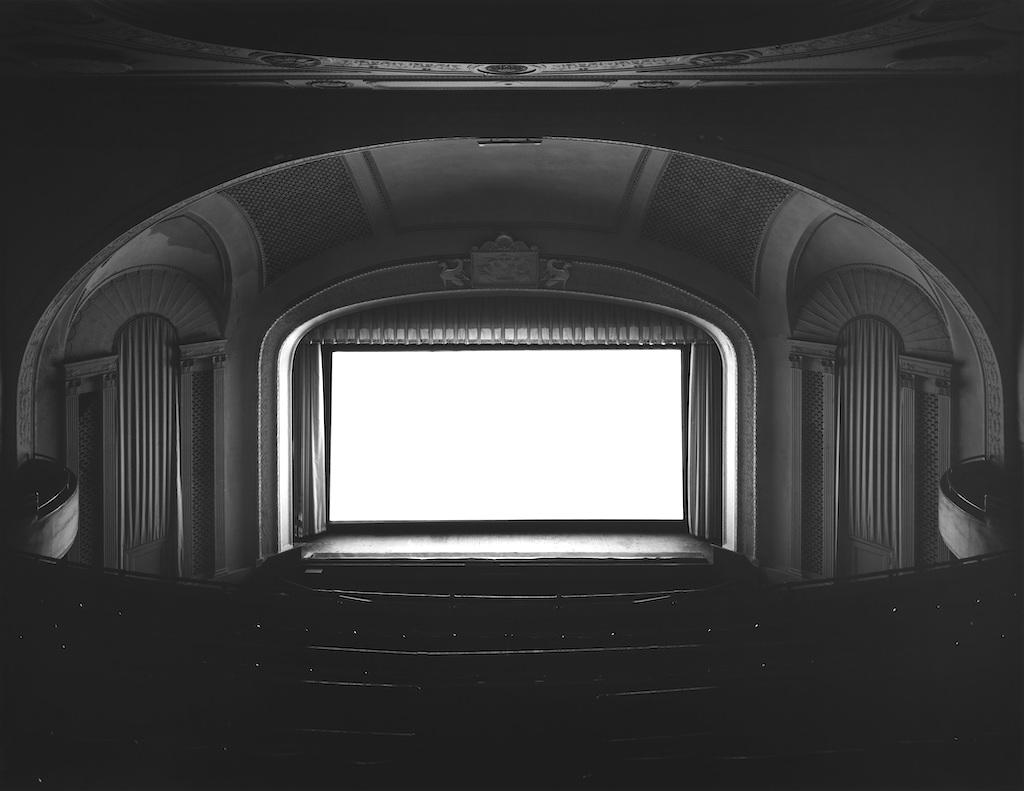 There’s also a droll sense of humour at work. Some 20 years after taking the diorama pictures, he was at Madame Tussaud’s trying to breathe life into waxworks by photographing them individually against a black ground. And things get complicated, especially with historical figures like Henry VIII and Anne Boleyn that are based on oil paintings – official images, rather than actual likenesses – so humanising them means transforming an icon into a person. Dressed in finery that could have come from a dressing up box along with Woolworth’s finest buckles, rings and pearls, Henry VIII looks like an actor playing the part, while Queen Victoria could be a man in drag.
There’s also a droll sense of humour at work. Some 20 years after taking the diorama pictures, he was at Madame Tussaud’s trying to breathe life into waxworks by photographing them individually against a black ground. And things get complicated, especially with historical figures like Henry VIII and Anne Boleyn that are based on oil paintings – official images, rather than actual likenesses – so humanising them means transforming an icon into a person. Dressed in finery that could have come from a dressing up box along with Woolworth’s finest buckles, rings and pearls, Henry VIII looks like an actor playing the part, while Queen Victoria could be a man in drag.
Even though she’s in full regalia, the late Queen seems to have been caught unawares; without the regal smile, she looks like a tired housewife in need of a break. Fidel Castro looks old and frail, and Napoleon appears introverted and unsure. Most convincingly theatrical is Salvador Dali, the consummate showman who was always playing a part (pictured above right), and most present is Princess Diana, probably because she’s wearing her own gown and is instantly recognisable to us as a photographic image.
The series, Theaters addresses the power of cinema (pictured above left: UA Playhouse, New York). “A two-hour film is the equivalent of 172,800 photographic after images,” Sugimoto points out, and he wants to record them all. By keeping the shutter open for the entire length of a feature, he captures the whole experience. The accumulated frames light up the screen with a white hot intensity. And casting an ethereal glow onto the surrounding architecture, seem to embody the emptiness of the promises offered by Hollywood. And when he projects a film inside a derelict cinema, theatre or opera house, the sorry sight of crumbling grandeur suggests misguided aspiration and broken dreams.
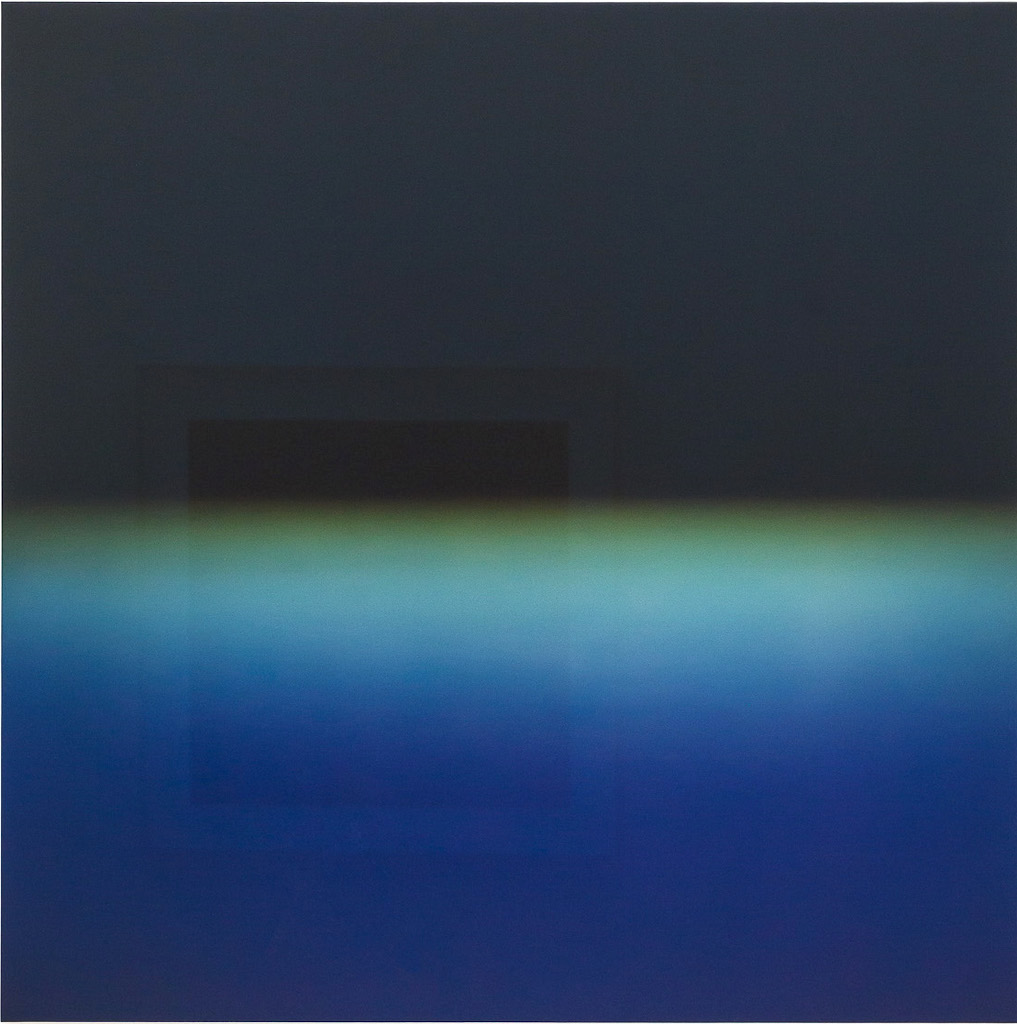 For over 40 years, Sugimoto used a traditional large format, wooden camera mounted on a tripod with black and white film, which he developed and printed himself. But in 2018 he began exploring colour. With the aid of a mirror and a huge prism that broke light up into its constituent parts, he was able to capture pure colour on film.
For over 40 years, Sugimoto used a traditional large format, wooden camera mounted on a tripod with black and white film, which he developed and printed himself. But in 2018 he began exploring colour. With the aid of a mirror and a huge prism that broke light up into its constituent parts, he was able to capture pure colour on film.
The resulting Opticks (pictured above right) are reminiscent of Mark Rothko’s abstract paintings, but if Sugimoto hopes to rival them he is on dangerous ground. Although beautiful, his images seem more like scientific experiments than paintings. If the life of a painting is visible in its surface – in the push and pull of the brush marks, for instance – the huge effort that went into making the photographs remains invisible. And missing the palpable history that gives a painting emotional resonance, they contain no sense of struggle, purpose or time.
Then there’s the annoyance of the reflections; a print shown behind glass that reflects people and gallery lights doesn’t allow one to experience pure colour. For that you need a light installation a la Dan Flavin.
But Sugimoto is wedded to his medium. The Seascapes which he began in 1980 and continues to this day (pictured below left: Bay of Sagami, Atami), are as much about the photographic print as they are about space, light and atmospherics. Gazing out to sea gives me a euphoric sense of infinite space unadulterated by human presence – a feeling of expansion almost akin to levitating.
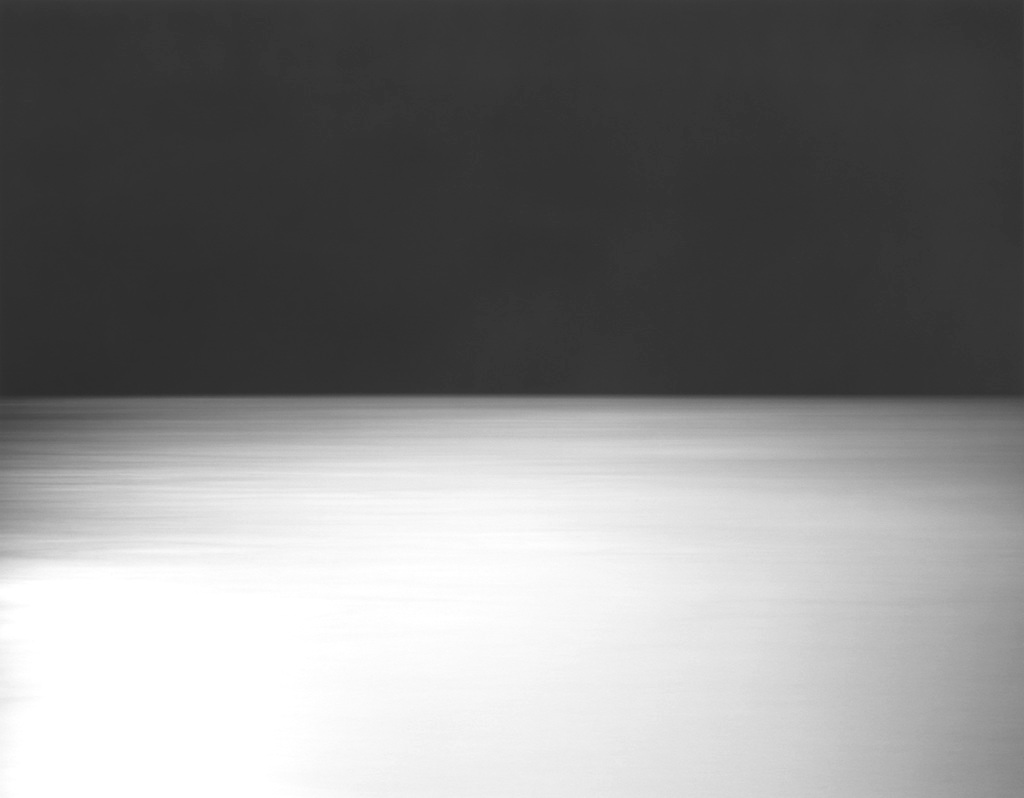 By contrast, Sugimoto’s seascapes are almost claustrophobic in their flatness. Whether they were taken at night or by day, emphasis is on the horizon line that divides each photograph in half. There are no dramatic clouds or storm-tossed seas, no birds, boats or people – only uniform skies and oceans scarcely ruffled by tiny waves. So one’s eye is drawn to the differing textures of water and air, to the clarity or haziness of the dividing line between them and to the ability of a photograph to capture such nuances.
By contrast, Sugimoto’s seascapes are almost claustrophobic in their flatness. Whether they were taken at night or by day, emphasis is on the horizon line that divides each photograph in half. There are no dramatic clouds or storm-tossed seas, no birds, boats or people – only uniform skies and oceans scarcely ruffled by tiny waves. So one’s eye is drawn to the differing textures of water and air, to the clarity or haziness of the dividing line between them and to the ability of a photograph to capture such nuances.
The prints are hung in a progression from dark to light, which in reverse takes you from light into darkness. Sugimoto describes them as scenes that “are before human beings and after human beings”; not so much seascapes, then, as an opportunity to contemplate death, eternity or life on earth without humanity. It makes Sugimoto as much a philosopher as an artist and his seascapes more like icons than vistas. Pause for thought.
- Hiroshi Sugimoto at the Hayward Gallery until 7 January 2024
- More visual arts reviews on theartsdesk
rating
Explore topics
Share this article
The future of Arts Journalism
You can stop theartsdesk.com closing!
We urgently need financing to survive. Our fundraising drive has thus far raised £49,000 but we need to reach £100,000 or we will be forced to close. Please contribute here: https://gofund.me/c3f6033d
And if you can forward this information to anyone who might assist, we’d be grateful.

Subscribe to theartsdesk.com
Thank you for continuing to read our work on theartsdesk.com. For unlimited access to every article in its entirety, including our archive of more than 15,000 pieces, we're asking for £5 per month or £40 per year. We feel it's a very good deal, and hope you do too.
To take a subscription now simply click here.
And if you're looking for that extra gift for a friend or family member, why not treat them to a theartsdesk.com gift subscription?
more Visual arts
 'We are bowled over!' Thank you for your messages of love and support
Much-appreciated words of commendation from readers and the cultural community
'We are bowled over!' Thank you for your messages of love and support
Much-appreciated words of commendation from readers and the cultural community
![SEX MONEY RACE RELIGION [2016] by Gilbert and George. Installation shot of Gilbert & George 21ST CENTURY PICTURES Hayward Gallery](https://theartsdesk.com/sites/default/files/styles/thumbnail/public/mastimages/Gilbert%20%26%20George_%2021ST%20CENTURY%20PICTURES.%20SEX%20MONEY%20RACE%20RELIGION%20%5B2016%5D.%20Photo_%20Mark%20Blower.%20Courtesy%20of%20the%20Gilbert%20%26%20George%20and%20the%20Hayward%20Gallery._0.jpg?itok=7tVsLyR-) Gilbert & George, 21st Century Pictures, Hayward Gallery review - brash, bright and not so beautiful
The couple's coloured photomontages shout louder than ever, causing sensory overload
Gilbert & George, 21st Century Pictures, Hayward Gallery review - brash, bright and not so beautiful
The couple's coloured photomontages shout louder than ever, causing sensory overload
 Lee Miller, Tate Britain review - an extraordinary career that remains an enigma
Fashion photographer, artist or war reporter; will the real Lee Miller please step forward?
Lee Miller, Tate Britain review - an extraordinary career that remains an enigma
Fashion photographer, artist or war reporter; will the real Lee Miller please step forward?
 Kerry James Marshall: The Histories, Royal Academy review - a triumphant celebration of blackness
Room after room of glorious paintings
Kerry James Marshall: The Histories, Royal Academy review - a triumphant celebration of blackness
Room after room of glorious paintings
 Folkestone Triennial 2025 - landscape, seascape, art lovers' escape
Locally rooted festival brings home many but not all global concerns
Folkestone Triennial 2025 - landscape, seascape, art lovers' escape
Locally rooted festival brings home many but not all global concerns
 Sir Brian Clarke (1953-2025) - a personal tribute
Remembering an artist with a gift for the transcendent
Sir Brian Clarke (1953-2025) - a personal tribute
Remembering an artist with a gift for the transcendent
 Emily Kam Kngwarray, Tate Modern review - glimpses of another world
Pictures that are an affirmation of belonging
Emily Kam Kngwarray, Tate Modern review - glimpses of another world
Pictures that are an affirmation of belonging
 Kiefer / Van Gogh, Royal Academy review - a pairing of opposites
Small scale intensity meets large scale melodrama
Kiefer / Van Gogh, Royal Academy review - a pairing of opposites
Small scale intensity meets large scale melodrama
 Jenny Saville: The Anatomy of Painting, National Portrait Gallery review - a protégé losing her way
A brilliant painter in search of a worthwhile subject
Jenny Saville: The Anatomy of Painting, National Portrait Gallery review - a protégé losing her way
A brilliant painter in search of a worthwhile subject
 Abstract Erotic, Courtauld Gallery review - sculpture that is sensuous, funny and subversive
Testing the boundaries of good taste, and winning
Abstract Erotic, Courtauld Gallery review - sculpture that is sensuous, funny and subversive
Testing the boundaries of good taste, and winning
 Edward Burra, Tate Britain review - watercolour made mainstream
Social satire with a nasty bite
Edward Burra, Tate Britain review - watercolour made mainstream
Social satire with a nasty bite
 Ithell Colquhoun, Tate Britain review - revelations of a weird and wonderful world
Emanations from the unconscious
Ithell Colquhoun, Tate Britain review - revelations of a weird and wonderful world
Emanations from the unconscious

Add comment